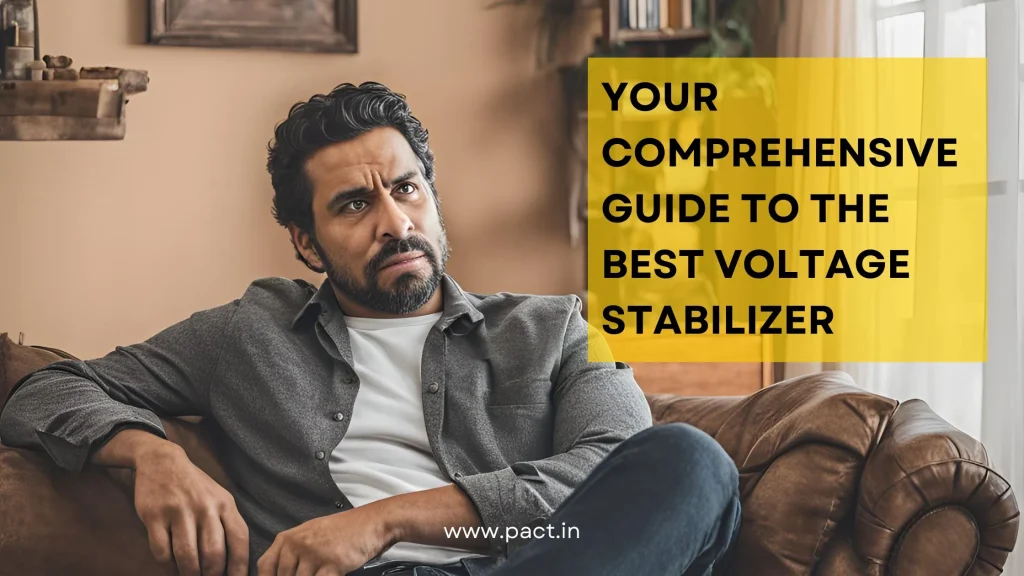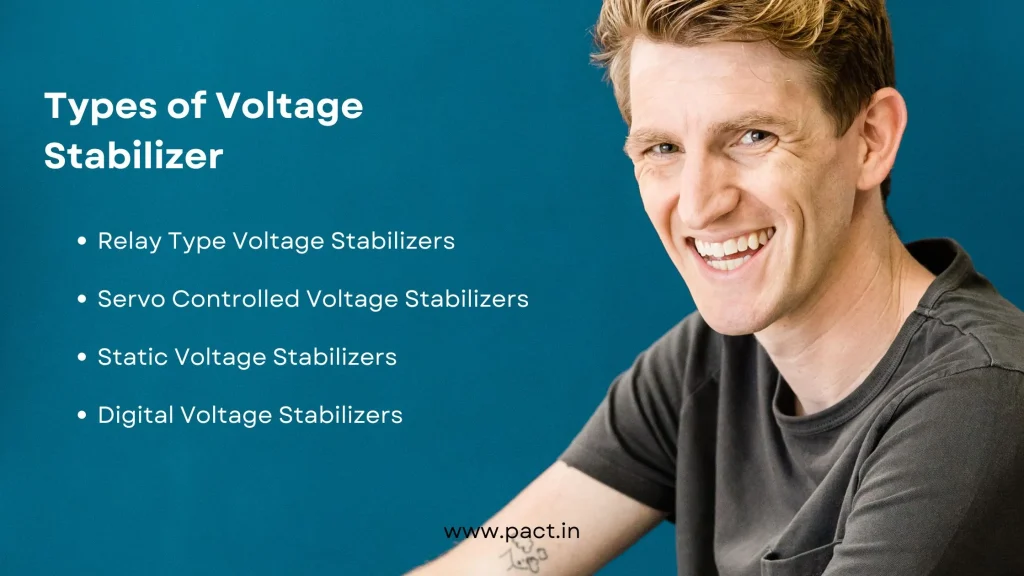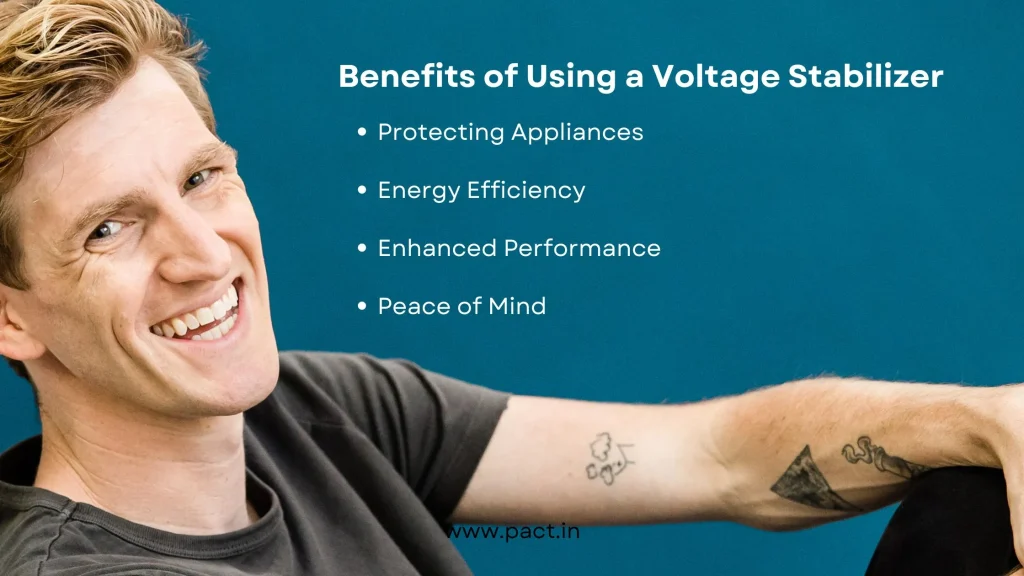Are you tired of dealing with frequent voltage fluctuations?

Finding the best voltage stabilizer can be a game-changer. In this comprehensive guide, we’ll explore different types of voltage stabilizers, their features, benefits, installation tips, and maintenance guidelines. By the end, you’ll be equipped with everything you need to make an informed decision.
Types of Voltage Stabilizer

- Relay Type Voltage Stabilizers: Relay type stabilizers are perfect for small appliances. They work by switching relays to regulate voltage. These stabilizers are cost-effective and ideal for low power applications.
- Servo Controlled Voltage Stabilizers: Servo controlled stabilizers are highly accurate and reliable. They use a servo motor to control voltage output, making them suitable for sensitive equipment. You’ll find these in hospitals, research labs, and high-end residential setups.
- Static Voltage Stabilizers: Static stabilizers are known for their quick response time and precise voltage control. They use electronic circuitry instead of mechanical parts, ensuring minimal wear and tear. These are great for industrial applications.
- Digital Voltage Stabilizers: Digital stabilizers use microprocessors to control voltage regulation. They offer superior protection and come with features like digital displays and remote monitoring. You can use them for a variety of applications, from home appliances to industrial machinery.
Features to Look For Energy-efficient voltage stabilizer
When choosing the best voltage stabilizer, consider these essential features:
- Input Voltage Range: Ensure the stabilizer can handle the voltage fluctuations in your area.
- Output Voltage Accuracy: Look for stabilizers that offer precise voltage control to protect your appliances.
- Time Delay System: A time delay feature protects your appliances from sudden surges when power is restored.
- Overload Protection: This feature prevents damage by disconnecting the load during an overload situation.
- Digital Display: A digital display provides real-time information about voltage levels, helping you monitor the stabilizer’s performance.
Benefits of Using a Voltage Stabilizer
Using a voltage stabilizer offers numerous benefits, including:

- Protecting Appliances: Voltage stabilizers shield your appliances from voltage fluctuations, extending their lifespan.
- Energy Efficiency: Stabilizers optimize voltage supply, reducing energy consumption and lowering electricity bills.
- Enhanced Performance: Consistent voltage supply ensures your appliances perform optimally, without interruptions.
- Peace of Mind: Knowing your valuable electronics are protected gives you peace of mind and reduces repair costs.
Installation Tips for Voltage stabilizer for home use
Installing a voltage stabilizer is straightforward. Follow these steps to ensure a hassle-free setup:
- Choose the Right Location: Install the stabilizer in a cool, dry place away from direct sunlight and moisture.
- Proper Ventilation: Ensure there is adequate ventilation around the stabilizer to prevent overheating.
- Secure Mounting: Mount the stabilizer securely on a wall or place it on a stable surface to avoid vibrations.
- Connect Correctly: Follow the manufacturer’s instructions to connect the stabilizer to your appliances.
- Check Wiring: Make sure all wiring connections are tight and secure to avoid any loose contacts.
Maintenance Guidelines
Regular maintenance is key to ensuring your voltage stabilizer performs efficiently. Here are some tips:
- Periodic Cleaning: Dust and debris can accumulate over time. Clean the stabilizer regularly to maintain optimal performance.
- Check Connections: Inspect all electrical connections periodically to ensure they are tight and free from corrosion.
- Monitor Performance: Keep an eye on the stabilizer’s digital display (if available) to monitor voltage levels and performance.
- Professional Servicing: Schedule professional servicing at least once a year to address any potential issues and ensure the stabilizer is in top condition.
Conclusion
Finding the best voltage stabilizer for your needs doesn’t have to be daunting. By understanding the different types, features, benefits, installation tips, and maintenance guidelines, you’re well on your way to making an informed choice. Remember, a good voltage stabilizer not only protects your appliances but also ensures they run efficiently and last longer. So, invest wisely and enjoy the peace of mind that comes with knowing your valuable electronics are safe and sound.
With this guide, you now have the knowledge to select the best voltage stabilizer that suits your requirements. Happy stabilizing! Happy Shopping!

